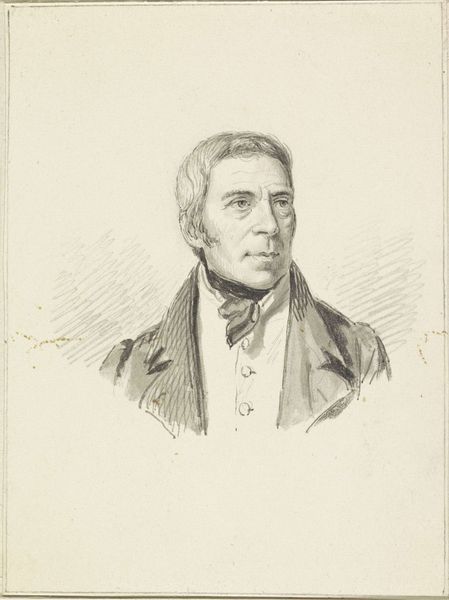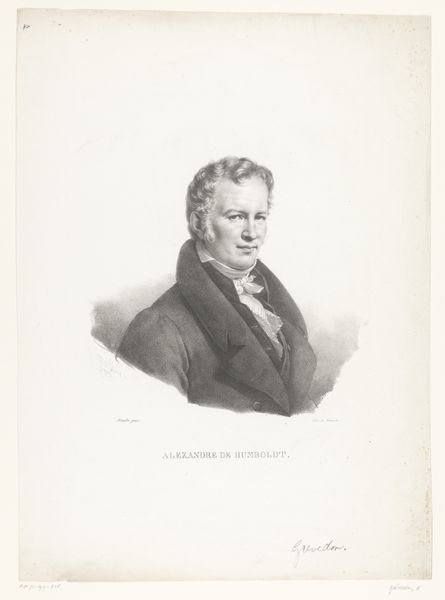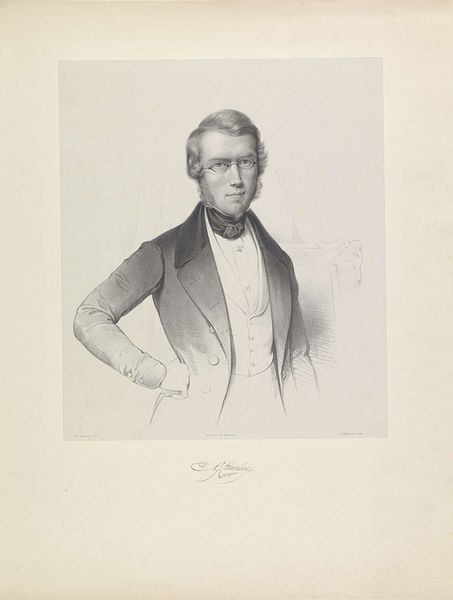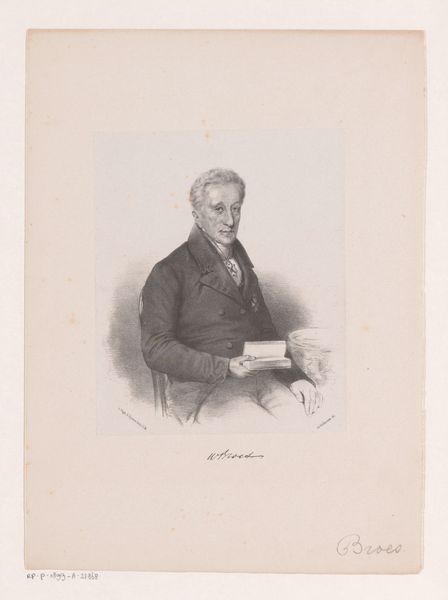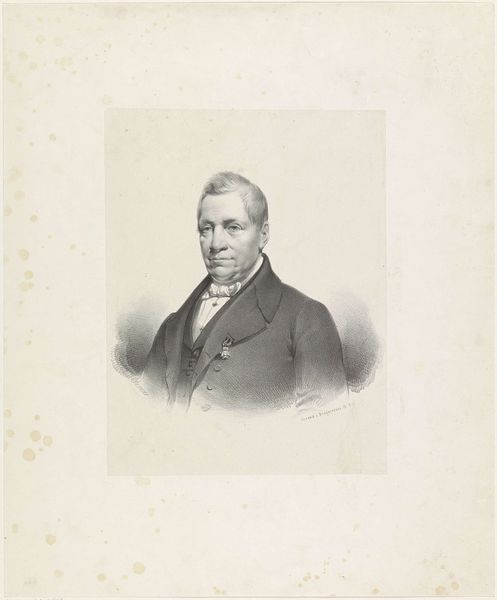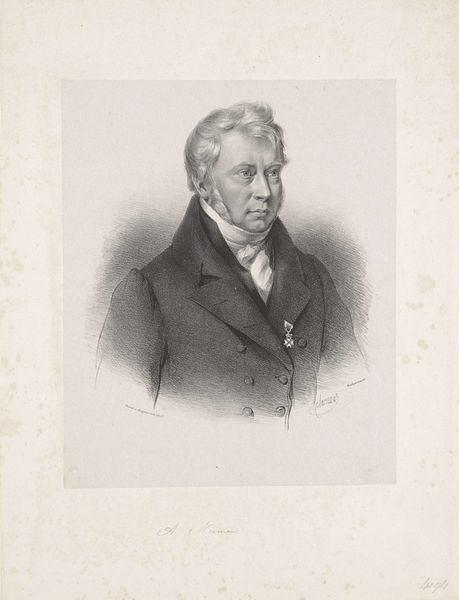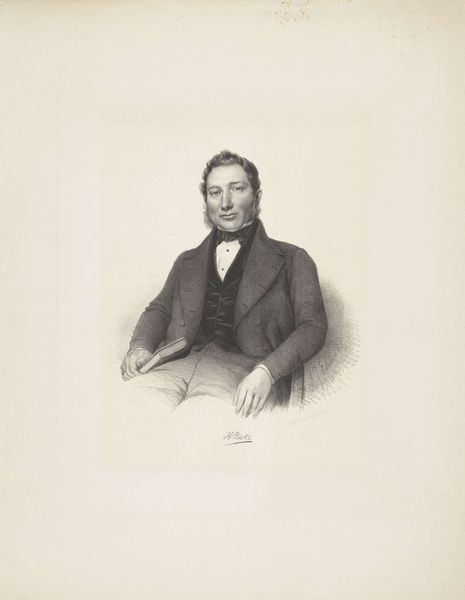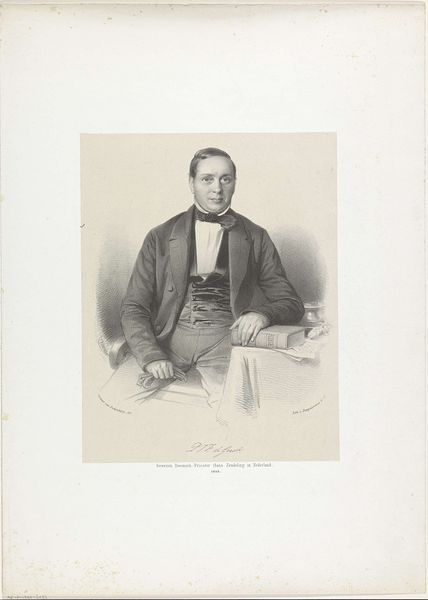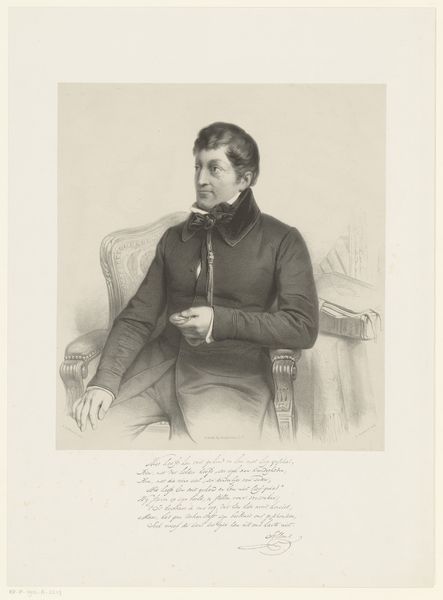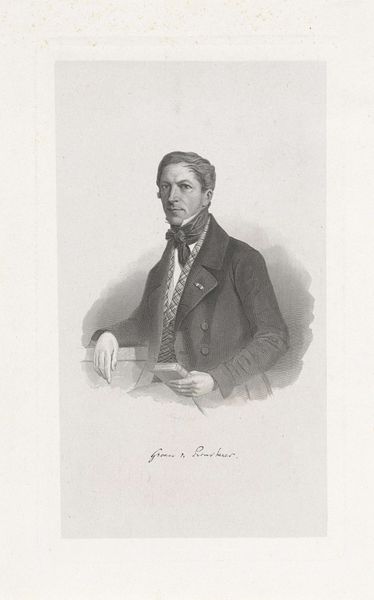
drawing, graphite, engraving
#
portrait
#
pencil drawn
#
drawing
#
charcoal drawing
#
pencil drawing
#
graphite
#
portrait drawing
#
academic-art
#
graphite
#
engraving
#
realism
Dimensions: height 555 mm, width 440 mm
Copyright: Rijks Museum: Open Domain
Curator: Good morning. We're standing before a portrait from the Rijksmuseum collection, a work titled "Portret van Jan Pieter Teding van Berkhout". This portrait, employing graphite and engraving, comes to us from the period between 1829 and 1863 and is attributed to Adrianus Johannes Ehnle. Editor: It's a rather stern face, isn’t it? The kind that makes you instantly consider what grand pronouncements this man must have made in his lifetime. And it’s rendered with such precise detail – almost photographic. I mean, look at the way the light catches his coat buttons! It’s intriguing. Curator: Indeed. Consider how portraiture during this period functioned within the bourgeoisie. It wasn’t merely about representation; it was about enshrining status, virtue, and legacy. Notice the subject’s attire and pose. The clothing subtly hints at his social standing, while the posture conveys a sense of authority and perhaps a deliberate gravitas. Editor: It's interesting you point out the symbolism. I'm also stuck by how contained he seems. The portrait almost feels like a psychological study in reserve. But also… he looks like he's seen some things. His face seems like the accumulation of years of thought. Or perhaps a lot of municipal meetings? Curator: Perhaps both! We might also look to other, less obvious symbols. The quality of the graphite and engraving itself can be symbolic, mirroring the subject’s refined tastes and access to material wealth. There's also the choice of the artist himself; Ehnle, who worked largely on portraiture and engraving, further solidified Berkhout's public image in this tradition. Editor: It really makes you consider how our own selfies will be interpreted centuries from now. What will future art critics make of the duck face? And what about the backgrounds? What would they gather? A half-eaten bowl of cereal and a pile of unread books. That speaks volumes too! Curator: That is precisely why reflecting upon such artworks provides an important connection across the eras. Even though mediums change, certain motivations persist: the need to remember, to immortalize, to present an idea of self to the world. Editor: A face from the past, staring into our present. Makes you think, doesn't it? Thanks for giving him a voice today. Curator: Indeed, it's been a pleasure to bring a little more context to this historical portrait. Thank you.
Comments
No comments
Be the first to comment and join the conversation on the ultimate creative platform.

